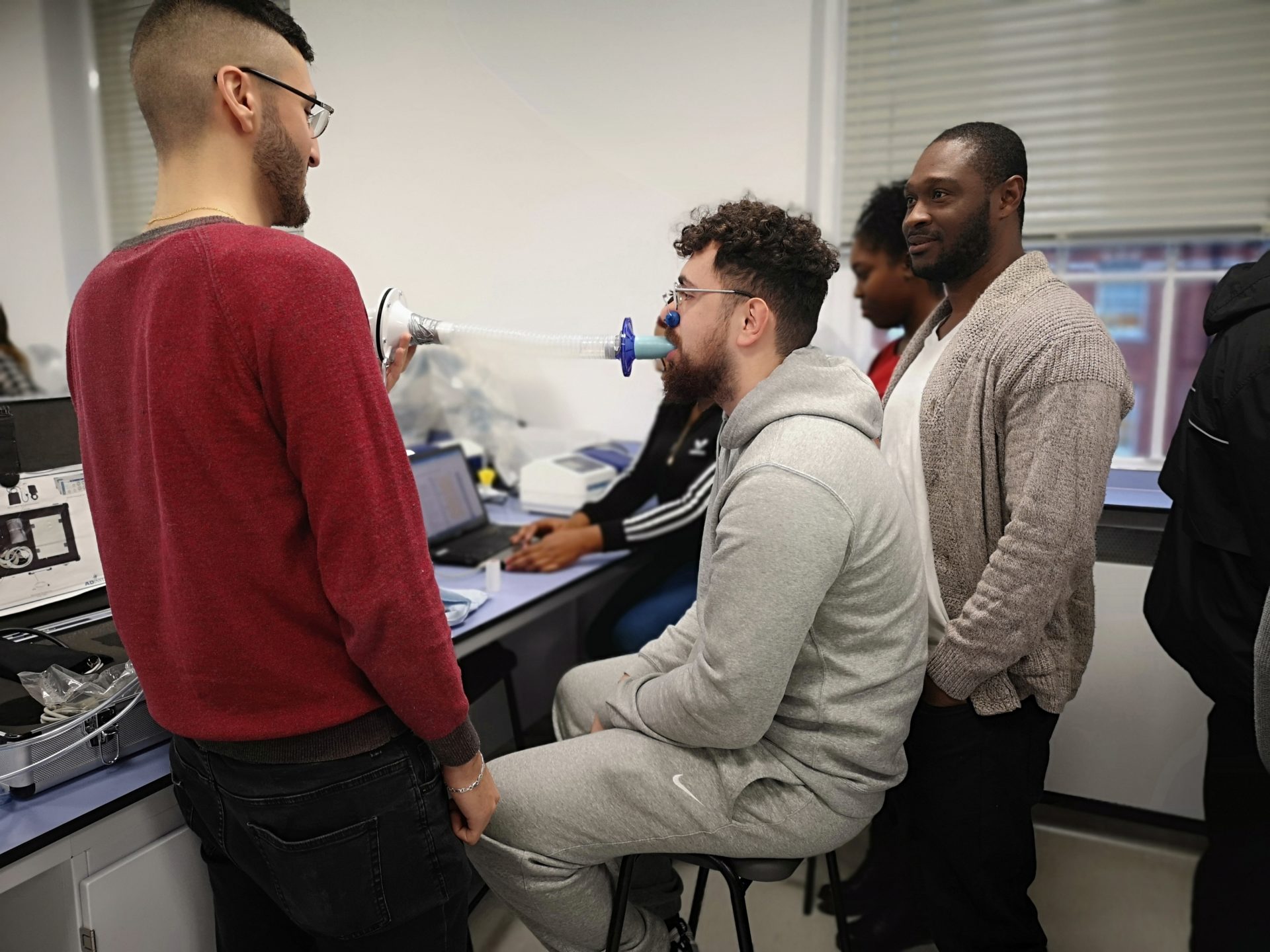Human physiology is most powerfully demonstrated to undergraduate students with real-time observations on the body’s physiological responses to experimental interventions. However, with the breadth of applications of physiology to subjects such as biomedical science, forensics, human nutrition, pharmaceutical science, and beyond, the skill-sets and previous laboratory experience of students undertaking experimental physiology modules are widely varied. This can result in apprehension and anxiety in students within the physiology laboratory and can result in students focussing on the methodology, rather than the physiology that the experiments intend to demonstrate. In addition, inevitably large class sizes with a broad international and multicultural diversity call for human physiology practicals to be re-designed to allow all students to be engaged in the learning-by-doing experiments. Undergraduate students today confidently use technology to inform their learning and understanding of the world around them. Importantly, this confidence in learning and exploration using technology is shared by all students, regardless of their discipline or cultural background. The additional support that technology-solutions can provide to students both inside, and outside of the laboratory can better prepare them to be able to use the contact-time most constructively. Over the last 5 years, students working in interdisciplinary groups from across all life science disciplines offered at the University of Greenwich have been using ADInstruments’ teaching hardware and cloud-based learning platform, Lt. The pre-laboratory interactive material provides students with an introduction to the relevant physiology concepts, and instructional videos remove the reliance on teaching staff to provide technical support in the laboratory. Laboratory sessions were aligned to occur on the same day as the relevant lecture, allowing students to engage with the physiology theory in practice, reinforcing their understanding of the concepts delivered in the classroom. Since the introduction of the new experimental format, attendance at practical sessions increased, there was better engagement from students of all backgrounds, average whole-module marks increased for students across all disciplines, and the standard deviation of average marks reduced. Students also reported better satisfaction with the laboratory sessions, and the module as a whole. With students at the heart of their learning as both subjects and observers, and the removal of anxiety over more novel practical techniques through the support in the cloud-based learning interface, the focus of these sessions shifted from instructor-led, to student-led. This not only engaged students in the physiology itself, but encouraged conversation between the inter-disciplinary working groups, where students gained deeper-learning, and an understanding of the relevance and application of physiology to their own field, and beyond.
Physiology 2019 (Aberdeen, UK) (2019) Proc Physiol Soc 43, SA005
Research Symposium: Technology-enhanced learning-by-doing: Inclusive experimental human physiology in Higher Education.
A. Rickard1
1. School of Science, University of Greenwich, Chatham, Kent, United Kingdom.
View other abstracts by:
Students undertaking a spirometry experiment in a physiology teaching practical.
Where applicable, experiments conform with Society ethical requirements.

